Hofstede’s cultural dimensions theory in advertising: KFC, BMW and Heineken
Hofstede’s cultural dimensions theory is a framework for measuring cultural dimensions from a global perspective. It is a useful business tool which provides insights for organizations looking to extend their business internationally.
I was curious to know if this tool is relevant in advertising so I selected three brands, KFC Singapore, BMW China and Heineken Italy and analyzed one ad for each brand.
To learn the Hofstede rankings of each country, I used this tool.
KFC Singapore
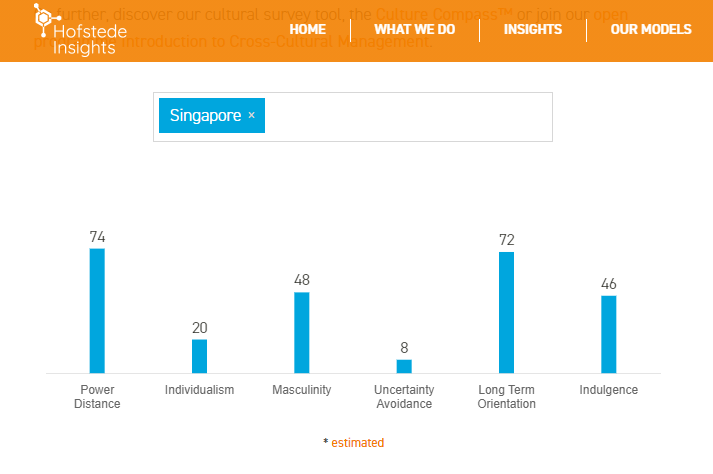
Power distance 74
Watching this ad by KFC Singapore, I see three cultural dimensions at play: power distance, individualism vs collectivism and masculinity vs femininity.
According to Hofstede’s theory estimations, Singapore ranks 74 at power distance. Power distance is the extent to which the less powerful members of organizations and institutions accept and expect that power is distributed unequally.
Singapore’s high score on this dimension indicates that it is a society that values hierarchy. This can be seen in the Singaporeans’ family meals customs which say that no one eats until the oldest member of the family lifts the spoon. In Singapore, older people are respected and listened to.
Individualism 20
The individualism vs collectivism dimension shows to which extent people feel independent or interdependent as members of larger communities. As you can see, Singapore ranks low in individualism which makes the society a collectivist one.
In the collectivist culture, family is at the heart of everything. A person views himself as a member of the family rather than an individual.
Masculinity 48
In regards to the masculinity dimension, Singapore ranks 48. Masculinity is the extent to which the use of force is endorsed socially.
Singapore’s rank tips the scale a little bit more to the feminine side. This means that conflicts are avoided and reaching a consensus is more important than being right.
What do we see in this ad?
We see a family preparing to eat together with the oldest, probably the grandmother sitting at the head of the table. As per tradition, everyone is inviting the grandmother to start eating. Although polite, what their invites do is repeatedly interrupt the hungry woman who doesn’t need convincing in front of a delicious bowl of KFC chicken. Because she doesn’t want to tell them off and ruin everyone’s good mood, she puts on a pair of headphones and starts eating with great pleasure.
BMW China
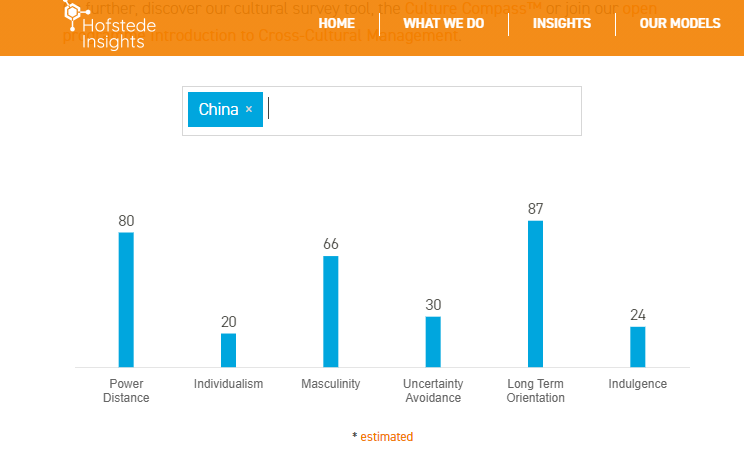
Power distance 80
This ad for the car manufacturer’s Chinese market pulls the strings on the viewer’s heart. It is longer than the average ad and uses this time to tell the story of a modern Chinese family with a hard-working white-collar father.
His son is trying to understand why his father is sometimes late to pick him up from kindergarten or even goes back to the office to work through the night. The only good reason he can think of is that his dad is a superhero and he gets wrapped up in doing superhero stuff.
China ranks very high in power distance. It is a country where subordinate-superior relationships tend to be polarized and can lead to power abuse by superiors.
We see this aspect of Chinese culture through the kid’s eyes: he imagines his father’s superiors as villains demanding him to dedicate his free time to the job and to making money because making money is more important than his son.
In his imagination, his father is fighting to overcome every obstacle that keeps him from coming home using every ability in his power: kung-fu strikes, negotiation or his bare fists. Like any other hero, he needs a sidekick to be successful and his BMW fulfils this role with flying colours.
Individualism 20
Chinese society ranks low in individualism. Although the ad focuses mainly on the kid, we can still see how important and how dedicated the father is to his son. He may be late, but he eventually shows up.
Masculinity 66
China is a masculine society where individuals are success-oriented and career-driven. And people have traditionally established roles.
As we can see in this ad, the mother is the child’s main caretaker and possibly a stay-at-home parent with the father having a well-paid job. Also, it’s not a coincidence that he is portrayed as a hero winning at everything he sets his mind to.
Heineken Italy
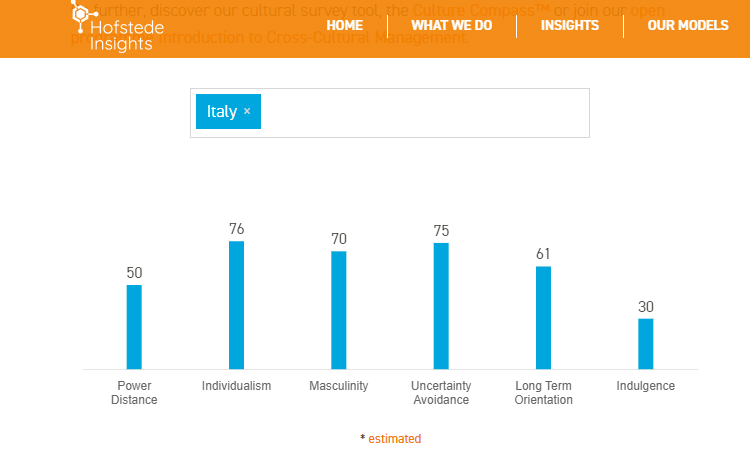
Masculinity 70
In this ad, we see Nico Rosberg, winner of the 2016 F1 World Championship and his father, Keke Rosberg, who also won the F1 World Championship, but 34 years earlier.
Competition is in their blood, both on the race track and in their father-son relationship also. Everything is a competition and winning is everything for this duo, from fishing the largest salmon to playing a game of tennis or throwing a paper ball into the trash can. And the loser gets to drive the car.
In the Behind the scenes video, Nico shares that to some extent, the ad reflects their relationship in real life. Playing a few games of tennis was a way for him and his father to spend time together.
Looking to expand your business into new markets?
Join BRAND MINDS 2023 and learn new strategies to create demand for your business from Renee Mauborgne, Bestselling Author of Blue Ocean Strategy.

Join the Conversation
We’d love to hear what you have to say.
Get in touch with us on our LinkedIn Page, Facebook Page, Twitter or TikTok.
What is Hofstede’s cultural dimensions theory? UK vs China, a comparison
Table of Contents
What is Hofstede’s cultural dimensions theory (definition)
Hofstede’s cultural dimensions theory is a framework for measuring cultural dimensions from a global perspective.
It is a useful business tool which provides insights for organizations looking to extend their business internationally.
With this framework, any organization planning to enter a market in a new country becomes aware of the cultural differences of that particular country.
What are the 6 dimensions of Hofstede’s theory?
Hofstede’s theory includes 6 cultural dimensions (source):
- Power distance index
- Individualism vs. collectivism
- Uncertainty avoidance
- Masculinity vs. femininity
- Long-term orientation vs. short-term orientation
- Indulgence vs. restraint
Hofstede’s dimension #1 – Power distance index
Power Distance is the extent to which the less powerful members of organizations and institutions (like the family) accept and expect that power is distributed unequally.
This dimension lies with the people at the bottom, not the people at the top. The perfect example of the power distance is illustrated in the family, in the relationship between children and parents.
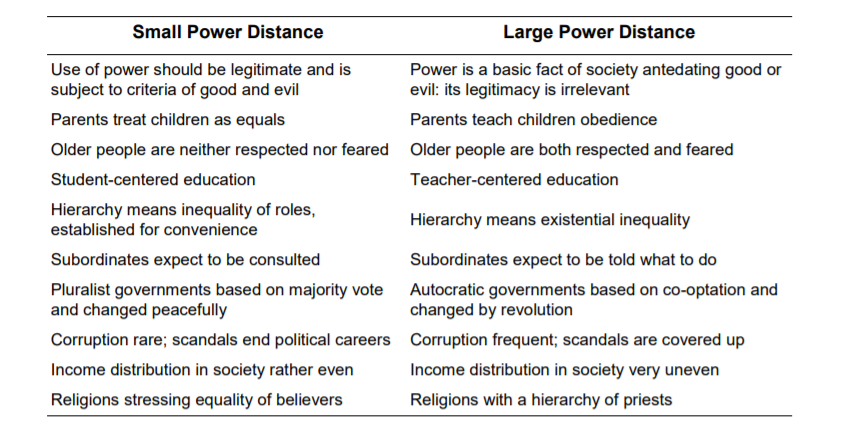
Hofstede’s dimension #2 – Individualism vs. collectivism
Individualism is the extent to which people feel independent, as opposed to being interdependent as members of larger communities.
Individualism means that individual choices and decisions are expected.
Collectivism means that everyone knows their place in life and society, which is determined socially.
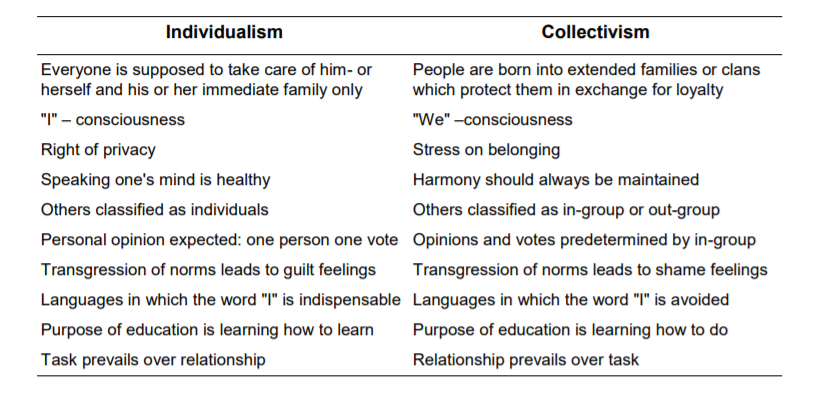
Hofstede’s dimension #3 – Uncertainty avoidance
Uncertainty avoidance deals with a society’s tolerance for uncertainty and ambiguity.
This dimension doesn’t refer to risk avoidance. It refers to the anxiety and distrust that people have in the face of the unknown and the absence of truth.
A high ranking of uncertainty avoidance illustrates people’s wish to have fixed habits and rituals and to know the truth.
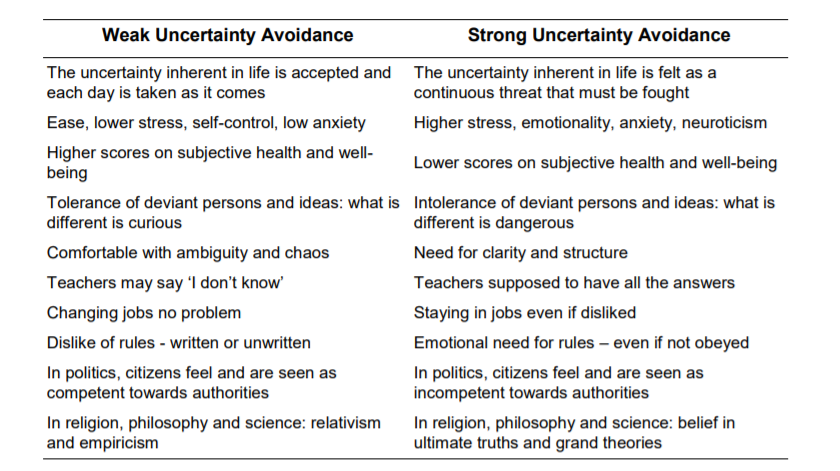
Hofstede’s dimension #4 – Masculinity vs. femininity
Masculinity is the extent to which the use of force is endorsed socially.
In a masculine society, men are expected to display specific behaviour traits like being and acting tough. Competition is at the heart of every activity and winning is important for both genders. There is a disconnect between men and women on an emotional level. In a feminine society, both genders are emotionally closer.
Competing is not so openly endorsed, and there is sympathy for the underdog.
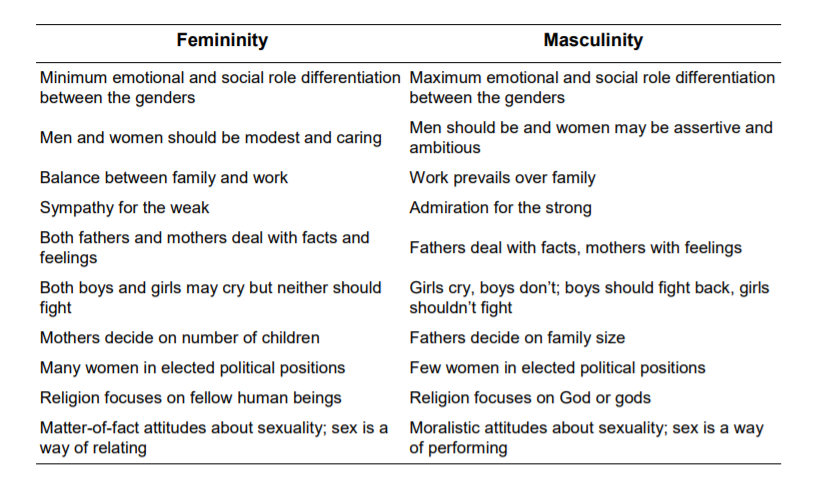
Hofstede’s dimension #5 – Long-term orientation vs. short-term orientation
The long-term orientation vs short-term orientation dimension is about change.
Cultures that believe the world keeps spinning, welcome change and look calmly towards the future. They know that preparing for the future is always needed. These cultures are long-term oriented and focus on technical and educational achievements.
Conversely, cultures that are short-term oriented place great emphasis on the past. They believe the world hasn’t changed much from the moment it was created. The past provides short-term oriented cultures with a blueprint for moral and social behaviour. It also influences their achievements.
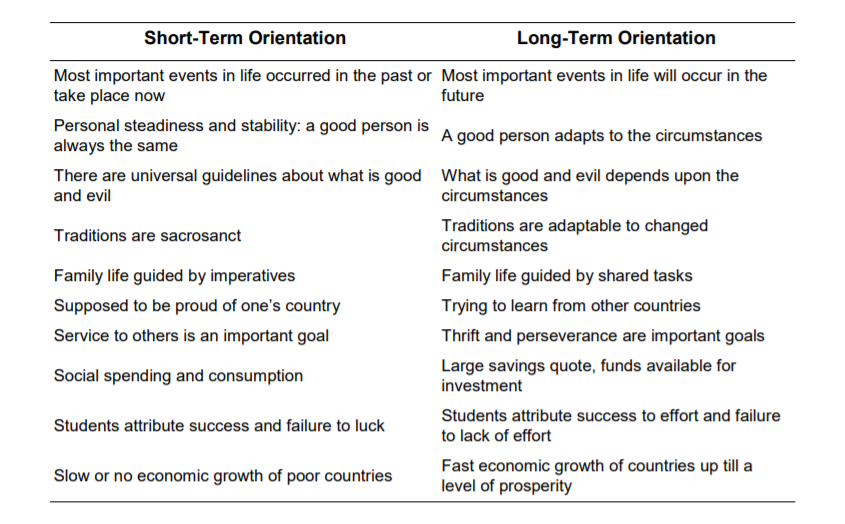
Hofstede’s dimension #6 – Indulgence vs. restraint
The sixth cultural dimension is about freedom and being able and allowed to have good things in life.
Indulgent cultures allow their people to fulfil their human basic pleasures and desires. People are free to enjoy their lives and have fun. They feel that they are in control of their lives.
Restraint cultures have strict social norms and regulations that suppress the fulfilment of needs and desires. People in restrained cultures feel less happy. They also feel that they cannot control what happens to them.
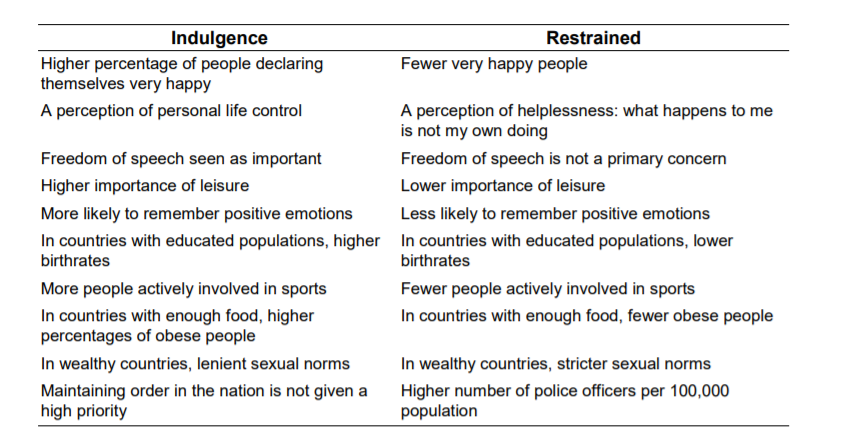
Who developed Hofstede’s cultural dimensions theory?
Hofstede’s cultural dimensions theory was developed by Dutch social psychologist Geert Hofstede while working at IBM International.
As a management trainer and manager of personnel research at IBM, Geert conducted over 100,000 employee opinion surveys in the subsidiaries of the company around the world.
At the time, his initiative produced one of the largest cross-national databases in existence.
The surveys revealed significant differences between cultures in other organizations, but the same answers by country.
Looking to organize the information in such a way that it produces valuable insights, he came up with four categories that he called cultural dimensions: power distance, individualism-collectivism, uncertainty avoidance, and masculinity-femininity.
He published his findings in his 1980 book Culture’s consequences: international differences in work-related values. In the following years, he added the fifth and sixth dimensions: long-term orientation and indulgence versus self-restraint.
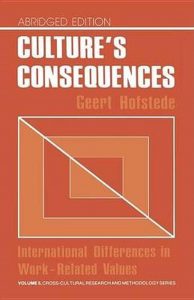
Geert Hofstede is the pioneer of cross-cultural research.
His theory is one of the earliest and most popular frameworks for measuring cultural dimensions from a global perspective. In recognition of his work, Geert received many honorary awards and distinctions.
In 2011, he was made a Knight by order of Her Majesty Beatrix, Queen of the Netherlands.
What is Hofstede’s definition of culture?
Geert Hofstede’s definition of culture is Culture is the collective programming of the mind that distinguishes the members of one group or category of people from others.
Cultures range from micro (a family’s culture) to macro (a nation’s culture).
Culture can also refer to professional groups, religious groups, young or old etc.
What does a group of people believe about the nature of man or the future? What are the relationships between the members of the group? To which extent do people need rules and regulations?
Why is Hofstede’s theory important for your business?
Hofstede’s cultural dimensions theory is the third business framework presented in this blog (check the first two: Porter’s 5 forces and PESTEL).
This particular business tool is useful when planning to expand your business globally. If you wish to enter a new market in another country, analyze it first by applying Hofstede’s theory of cultural dimensions.
Is it a culture that respects the elderly? Use this piece of information when choosing the face of your marketing and PR communication or when choosing the influencers your company works with to raise brand awareness.
If the market you are trying to enter has a culture which equals being different from being dangerous then maybe it would be smart for your business to first educate the market about your brand or work on preventing your brand to be perceived negatively.
In feminine cultures, how will your business or brand be affected? If your brand supports freedom of speech, how will your brand perform in a restrained culture where freedom of speech is not a primary concern?
Hofstede’s cultural dimensions theory provides business executives with valuable insights that they can use to make informed decisions.
UK vs China, a comparison
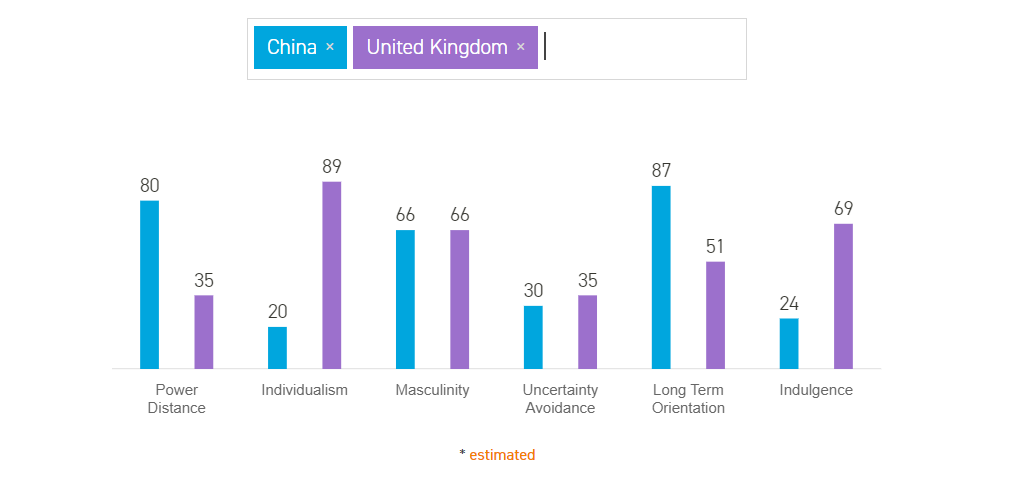
Power distance
UK 35% – a society that believes that inequalities amongst people should be minimized.
China 80% – a society that believes that inequalities amongst people are acceptable.
Individualism
UK 89% – a culture of people that are taught to think by themselves
China 20% – a highly collectivist culture where people act in the interests of the group and not necessarily of themselves.
Masculinity
UK 66% – a highly success-oriented and driven culture.
China 66% – success-oriented and driven, many Chinese will sacrifice family and leisure priorities to work.
Uncertainty avoidance
UK 35% – comfortable in ambiguous situations
China 30% – comfortable with ambiguity, are adaptable and entrepreneurial.
Long-term orientation
UK 51% – a society that equally values its own past while dealing with the challenges of the present and future
China 87% – a culture with a pragmatic orientation, that has the ability to easily adapt traditions to changed conditions
Indulgence
UK 69% – a culture that exhibits a willingness to realize their impulses and desires with regard to enjoying life and having fun.
China 24% – a restrained culture that doesn’t put much emphasis on leisure time and fulfilment of their desires.
Attend the BUSINESS STRATEGY MASTERCLASS, on October 27, and learn frameworks for creating a culture of continuous innovation from Costas Markides, Professor of Strategy & Entrepreneurship at London Business School.
Limited seats available. Get your tickets today!



